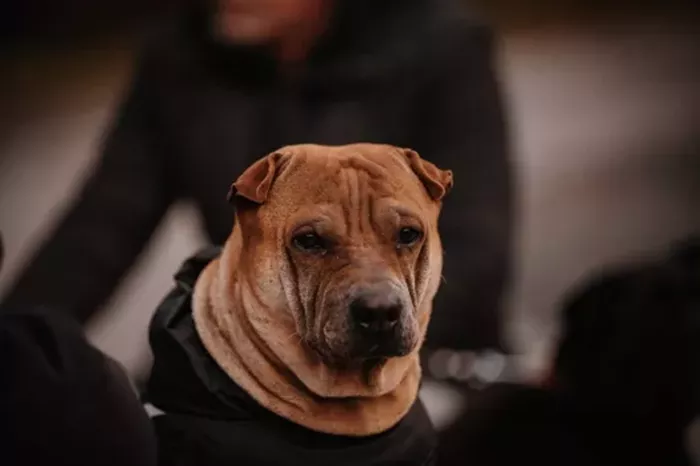Shar Peis are unique dogs known for their wrinkled skin and loyal nature. However, they come with several challenges that potential owners should consider. While their appearance is striking, their care requirements, health issues, and temperament can be difficult to handle. This article explores the major downsides of owning a Shar Pei in detail.
Health Problems in Shar Peis
Shar Peis are prone to many health issues due to their genetics. Their wrinkled skin, while cute, can cause serious problems. Skin infections are common because moisture and bacteria get trapped in the folds. Regular cleaning is necessary to prevent irritation and disease.
Another major concern is Shar Pei fever, a condition unique to this breed. It causes high fever, swollen joints, and pain. Without treatment, it can lead to kidney failure. Many Shar Peis also suffer from hip dysplasia, eye problems like entropion, and allergies. Vet bills can be expensive, making this breed costly to maintain.
High Maintenance Grooming Needs
Despite their short coat, Shar Peis require frequent grooming. Their deep wrinkles need daily cleaning to avoid infections. Owners must use special wipes or medicated shampoos to keep the skin healthy. Neglecting this routine can lead to painful rashes or fungal growth.
Their ears are another problem area. The small, folded ear structure traps dirt and moisture, increasing the risk of ear infections. Regular ear cleaning is a must. Additionally, Shar Peis shed moderately, so brushing a few times a week helps control loose hair.
Strong-Willed and Stubborn Temperament
Shar Peis are independent and strong-willed, making training difficult. They are not as eager to please as other breeds. Without firm and consistent training, they may develop bad behaviors like aggression or excessive barking. Early socialization is crucial to prevent them from becoming overly protective or territorial.
They can also be aloof with strangers and other pets. Some Shar Peis show dominance, especially around other dogs. Owners must establish leadership early to prevent behavioral issues. This breed is not ideal for first-time dog owners due to their stubborn nature.
Limited Tolerance for Heat and Exercise
Shar Peis overheat easily because of their thick skin and short muzzle. They struggle in hot weather and need a cool environment. Long walks or intense exercise can be dangerous in summer. Owners must provide shade, fresh water, and air conditioning to keep them comfortable.
Despite their medium size, Shar Peis are not highly active. They enjoy short walks but are not suited for running or long hikes. Too much exercise can strain their joints, especially if they have hip dysplasia. A sedentary lifestyle, however, can lead to obesity, so balance is key.
Potential Aggression and Guarding Behavior
Shar Peis were originally bred as guard dogs, and this instinct remains strong. They are naturally suspicious of strangers and may act aggressively if not properly trained. Some Shar Peis display dominance or territorial behavior, which can be problematic in households with children or other pets.
Early socialization helps reduce aggression, but some dogs may still be unpredictable. Owners must supervise interactions with new people or animals. A poorly trained Shar Pei can become a liability, especially in public spaces.
Short Lifespan Compared to Other Breeds
The average Shar Pei lives 8 to 12 years, which is shorter than many other breeds. Their health problems often reduce their lifespan. Conditions like kidney disease or cancer are common in older Shar Peis. Owners must be prepared for potential heartbreak as their pet ages.
Not Ideal for Families with Small Children
While Shar Peis can be loyal family pets, they may not tolerate rough play. Their protective nature can make them wary of sudden movements or loud noises. Small children may unintentionally provoke them, leading to bites or snaps. Families with young kids should consider a more patient and gentle breed.
Expensive to Purchase and Maintain
Purebred Shar Peis are costly, often ranging from 1,000to3,000. Reputable breeders charge more to ensure healthy genetics. Additionally, their medical needs add up quickly. Regular vet visits, medications, and special diets increase long-term expenses. Insurance can help, but premiums are higher for this high-risk breed.
Conclusion
Shar Peis are loving and loyal but come with many challenges. Their health issues, grooming needs, and strong personality make them a demanding breed. Potential owners must be prepared for the financial and time commitments required. If you can handle their downsides, a Shar Pei can be a devoted companion. However, those looking for a low-maintenance pet should consider other breeds.
Before getting a Shar Pei, research thoroughly and consult experienced owners. Understanding their needs will help you decide if this unique breed fits your lifestyle. Responsible ownership ensures a happy life for both the dog and the family.
Related topics:
How to Train a Basenji Basenji Mix Puppy
What Is the Smallest Breed of Schnauzer?
Where Does the Beauceron Dog Come From?


